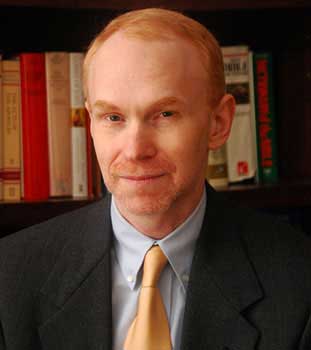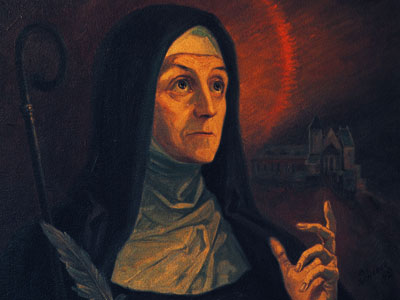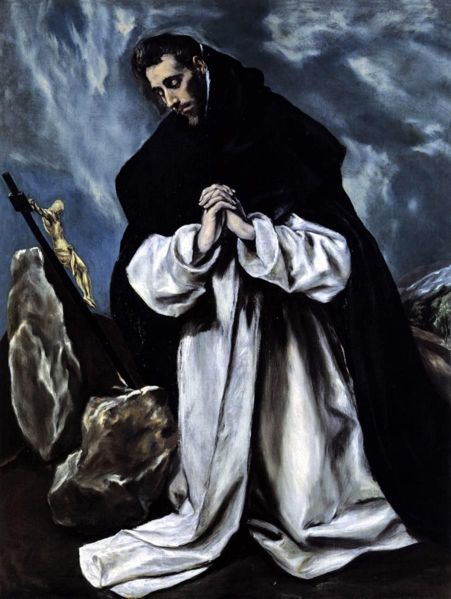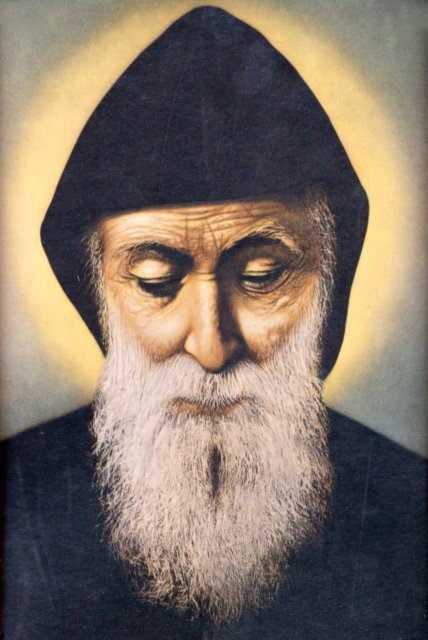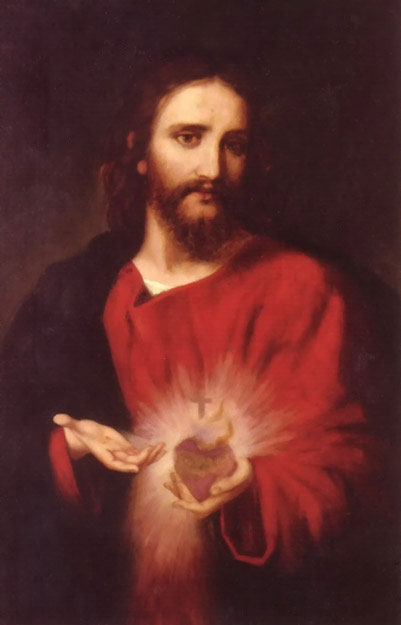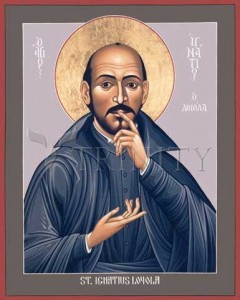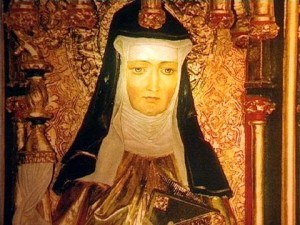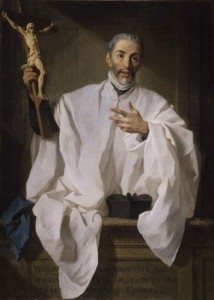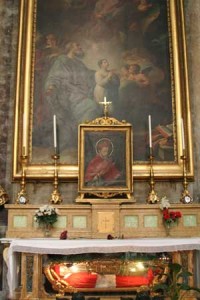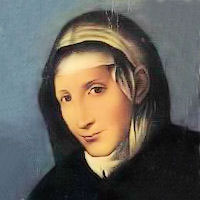Dr. Matthew Bunson discusses the life, times and teachings of St. Augustine of Hippo (part 1)
[powerpress]
Augustine of Hippo [
-Â Confessions
-Â Letters
-Â City of God
-Â Christian Doctrine
-Â On the Holy Trinity
-Â The Enchiridion
-Â On the Catechising of the Uninstructed
-Â On Faith and the Creed
-Â Concerning Faith of Things Not Seen
-Â On the Profit of Believing
-Â On the Creed: A Sermon to Catechumens
-Â On Continence
-Â On the Good of Marriage
-Â On Holy Virginity
-Â On the Good of Widowhood
-Â On Lying
-Â To Consentius: Against Lying
-Â On the Work of Monks
-Â On Patience
-Â On Care to be Had For the Dead
-Â On the Morals of the Catholic Church
-Â On the Morals of the Manichaeans
-Â On Two Souls, Against the Manichaeans
-Â Acts or Disputation Against Fortunatus the Manichaean
-Â Against the Epistle of Manichaeus Called Fundamental
-Â Reply to Faustus the Manichaean
-Â Concerning the Nature of Good, Against the Manichaeans
-Â On Baptism, Against the Donatists
-Â Answer to Letters of Petilian, Bishop of Cirta
-Â Merits and Remission of Sin, and Infant Baptism
-Â On the Spirit and the Letter
-Â On Nature and Grace
-Â On Man’s Perfection in Righteousness
-Â On the Proceedings of Pelagius
-Â On the Grace of Christ, and on Original Sin
-Â On Marriage and Concupiscence
-Â On the Soul and its Origin
-Â Against Two Letters of the Pelagians
-Â On Grace and Free Will
-Â On Rebuke and Grace
-Â The Predestination of the Saints/Gift of Perseverance
-Â Our Lord’s Sermon on the Mount
-Â The Harmony of the Gospels
-Â Sermons on Selected Lessons of the New Testament
-Â Tractates on the Gospel of John
-Â Homilies on the First Epistle of John
-Â Soliloquies
-Â The Enarrations, or Expositions, on the Psalms
n Milan, Augustine acquired the habit of listening – at first for the purpose of enriching his rhetorical baggage – to the eloquentpreaching of Bishop Ambrose, who had been a representative of the Emperor for Northern Italy. The African rhetorician was fascinated by the words of the great Milanese Prelate; and not only by his rhetoric. It was above all the content that increasingly touched Augustine’s heart. The great difficulty with the Old Testament, because of its lack of rhetorical beauty and lofty philosophy was resolved in St Ambrose’s preaching through his typological interpretation of the Old Testament: Augustine realized that the whole of the Old Testament was a journey toward Jesus Christ. Thus, he found the key to understanding the beauty and even the philosophical depth of the Old Testament and grasped the whole unity of the mystery of Christ in history, as well as the synthesis between philosophy, rationality and faith in the Logos, in Christ, the Eternal Word who was made flesh.
Augustine soon realized that the allegorical interpretation of Scripture and the Neo-Platonic philosophy practised by the Bishop of Milan enabled him to solve the intellectual difficulties which, when he was younger during his first approach to the biblical texts, had seemed insurmountable to him.
Thus, Augustine followed his reading of the philosophers’ writings by reading Scripture anew, especially the Pauline Letters. His conversion to Christianity on 15 August 386 therefore came at the end of a long and tormented inner journey – of which we shall speak in another catechesis -, and the African moved to the countryside, north of Milan by Lake Como – with his mother Monica, his son Adeodatus and a small group of friends – to prepare himself for Baptism. So it was that at the age of 32 Augustine was baptized by Ambrose in the Cathedral of Milan on 24 April 387, during the Easter Vigil.
For more visit Vatican.va
Dr. Matthew Bunson, Senior Fellow of the St. Paul Center for Biblical Theology, is one of the United States’ leading authorities on the papacy and the Church.
His books include: The Encyclopedia of Catholic History; The Encyclopedia of Saints; Papal Wisdom; All Shall Be Well; Encyclopedia of the Roman Empire; and The Angelic Doctor: The Life and World of St. Thomas Aquinas; The Pope Encyclopedia; We Have a Pope! Benedict XVI, the first Catholic biography of the Holy Father in the English language; the Encyclopedia of U.S. Catholic History; Pope Francis. His also the editor of OSV’s “The Catholic Answer” magazine.
Tags: beauty, catholic, catholic podcast, catholic prayer, cathollc spirituality, Church, matthew bunson, old testament, Pauline Letters
This entry was posted on Friday, November 8th, 2013 at 9:05 am
You can follow any responses to this entry through the RSS 2.0 feed.
Episode 21 Beginning to Pray: Â St. Hildegard von Bingen and “The Iron Mountain”
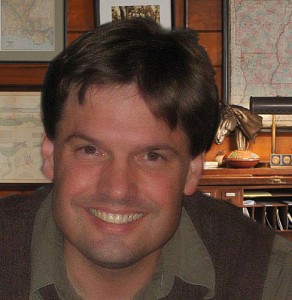
[powerpress]
From Dr. Lilles’ “Beginning to Pray” blog site:
September 17 is the feast of St. Hiildegard of Bingen. She lived from 1098-1179. A Benedictine Nun, at the age of 42, she was given visions and commanded rise up and cry out what she saw. She obeyed and produced a set of writings known today as Scivias.
Her first vision is of a hidden mountain, the mountain of God’s throne, an iron mountain of immutable justice hidden in divine glory. A purifying Fear of the Lord contemplates this splendor. Not the kind of fear that pulls away to protect itself. Rather the kind of fear that is vigilant and sees the truth. Eyes which gaze with this holy fear can never be satisfied with the merely mediocre. They guard against every form of compromise. The glory they behold demands absolute allegiance, complete surrender, and total humility.
In this description, is St. Hildegard suggesting a way by which we might enjoy the same vision she has shared in? This is no exercise in esoteric navel gazing. Her vision demands a journey beyond our own self-pre-occupation and into real friendship with God, a friendship protected by the strength of divine justice. She sees the truth in a way that demands an ongoing conversion of life.
She is well-formed in St. Benedict’s conversatio morum. The mountain she sees is not a truth we scrutinize so much as the truth that scrutinizes us: a scrutinizing of all our thoughts and actions in light of the Gospel. The truth she beholds demands repentance from the lack of justice we allow ourselves to slip into. The iron mountain she contemplates renders futile every effort to conform the Gospel to our own ways and invites us to be transformed by its just demands.
Today, where all kinds of cruelty are so easily excused and any form of self-indulgence so readily lifted up to the level of a fundamental human right, we need to rediscover the shadow of the iron mountain from which St. Hildegard cries out to us. Only under the glory of this mountain can we find the peace that the Lord has come to give. Only in the blinding light into which Holy Fear gazes can we find the humility to love one another the way Christ has loved us.
Dr. Anthony Lilles is a Catholic husband and father of three teaching Spiritual Theology at St. John Vianney Theological Seminary. He  teaches spiritual theology and spiritual direction to transitional deacons, and the spiritual classics to the men who enter the Spirituality Year, a year of prayer in preparation for seminary formation.  He is the author of the “Beginning to Pray”  catholic blog spot.
For other episodes in the series visit the Discerning Hearts page for Dr. Anthony Lilles
The music that is used comes from 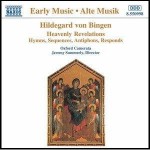
This the text we use  for our readings comes from:
Tags: Anthony Lilles, catholic, catholic podcast, catholic prayer, cathollc spirituality, father, mystic, mystic of the Church, spiritual direction, Spirituality Year, st hildegard of bingen
This entry was posted on Tuesday, September 17th, 2013 at 4:16 am
You can follow any responses to this entry through the RSS 2.0 feed.
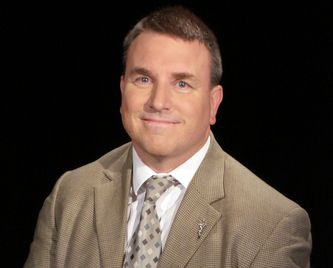 Episode 15 – Great Works in Western Literature with Joseph Pearce – St. Augustine
Episode 15 – Great Works in Western Literature with Joseph Pearce – St. Augustine
[powerpress]
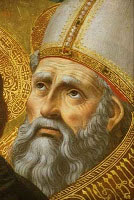 The Confessions of Saint Augustine is considered one of the greatest Christian classics of all time. It is an extended poetic, passionate, intimate prayer that Augustine wrote as an autobiography sometime after his conversion, to confess his sins and proclaim God’s goodness. Just as his first hearers were captivated by his powerful conversion story, so also have many millions been over the following sixteen centuries. His experience of God speaks to us across time with little need of transpositions.
The Confessions of Saint Augustine is considered one of the greatest Christian classics of all time. It is an extended poetic, passionate, intimate prayer that Augustine wrote as an autobiography sometime after his conversion, to confess his sins and proclaim God’s goodness. Just as his first hearers were captivated by his powerful conversion story, so also have many millions been over the following sixteen centuries. His experience of God speaks to us across time with little need of transpositions.
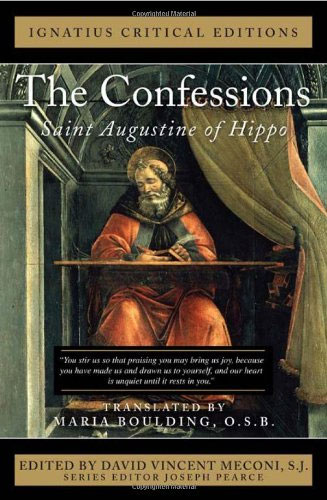 Based on the Ignatius Critical Edition, this series examines, from the Judeo-Christian perspective, the life, the times, and influence of authors of great works in literature .
Based on the Ignatius Critical Edition, this series examines, from the Judeo-Christian perspective, the life, the times, and influence of authors of great works in literature .
Joseph Pearce is currently the Writer-in-Residence and Visiting Fellow at Thomas More College of Liberal Arts in Merrimack, New Hampshire. He is also Visiting Scholar at Mount Royal Academy in Sunapee, New Hampshire. He is also Visiting Scholar at Mount Royal Academy in Sunapee, New Hampshire. He is  co-editor of the Saint Austin Review (or StAR), an international review of Christian culture, literature, and ideas published in England (Family Publications) and the United States (Sapientia Press). He is also the author of many books, including literary biographies of Solzhenitsyn, J. R. R. Tolkien, C. S. Lewis, G. K. Chesterton, and Oscar Wilde.
To learn more about the authors and titles available in the Ignatius Critical Editions
Tags: catholic, catholic podcast, catholic prayer, cathollc spirituality, conversion, joseph pearce, New Hampshire, prayer
This entry was posted on Tuesday, September 3rd, 2013 at 8:28 am
You can follow any responses to this entry through the RSS 2.0 feed.
St. Hildegard and  “Conversatio Morum – the Conversion of Life” – The Mystery of Faith in the Wisdom of the Saints

[powerpress]
Benedictine Spirituality and Lectio Divina…a “way of being”. Â In part one of this particular teaching, Dr. Lilles discusses the life St. Hildegard of Bingen and her expression of Benedictine teaching.
Dr.Anthony Lilles is a Catholic husband and father of three teaching Spiritual Theology at St. John Vianney Theological Seminary. He  teaches spiritual theology and spiritual direction to transitional deacons, and the spiritual classics to the men who enter the Spirituality Year, a year of prayer in preparation for seminary formation.  He is the author of the “Beginning to Pray”  Catholic blog spot.
For other episodes in the series visit the Discerning Hearts page for Dr. Anthony Lilles
Tags: Anthony Lilles, catholic, catholic podcast, catholic prayer, cathollc spirituality, Discerning Hearts, prayer, Spirituality Year, st. hildegard
This entry was posted on Wednesday, August 28th, 2013 at 9:43 pm
You can follow any responses to this entry through the RSS 2.0 feed.
[powerpress]
O Holy Priest of God
and glorious Patriarch, St. Dominic,
thou who wast the friend,
the well-beloved son
and confidant of the Queen of Heaven,
and didst work so many miracles
by the power of the Holy Rosary,
have regard for my intercessions.
On earth you opened your heart
to the miseries of your fellow man,
and your hands were strong to help them;
now in heaven your charity has not grown less
nor has your power waned.
Pray for me to the Mother of the Rosary
and to her Divine Son,
for I have great confidence
that through your assistance
I shall obtain the favor I so much desire:
(mention your intentions).
Amen.
Tags: catholic, catholic podcast, catholic prayer, cathollc spirituality
This entry was posted on Thursday, August 8th, 2013 at 12:09 am
You can follow any responses to this entry through the RSS 2.0 feed.
The Chaplet of St. Charbel – for text click here
[powerpress]
Countless…countless…miracles are attributed to this rmarkable saint of the Middle East…St. Charbel. I didn’t know of him until a wonderful member of the Fransican Friars of the Renewal, Br. Martin Ervin introduced us to this extraordinary man.
“In the 19th century Father Charbel Makhlouf-along with a few other saintly men-had tried to live again the austere life of the desert fathers of the early church. He belonged to the Christian body known as Maronites, a group which traces its name back to Saint Maro, a friend of Saint John Chrysostom. This group of Christians, most of whom still live in Lebanon, have been united to the Western Church since the 12th century, thus bringing into Western Christendom traditions of great value that might readily have been forgotten. These traditions are ones of enormous self- discipline, and few have exemplified them better than Charbel Makhlouf.
After 23 years of this ascetic life, Charbel had a paralyzing stroke just before the consecration while celebrating the Eucharist in his chapel, and died eight days later on Christmas Eve. After his death many favors and miracles were claimed through his intercession in heaven. Today his tomb is visited by large numbers of people, not only Lebanese Maronites and not only Christians” – Mansour Mouasher
In 1950, Father George Webby, a Maronite priest from Scranton, visited Lebanon, took a photo of monks outside the wall of the 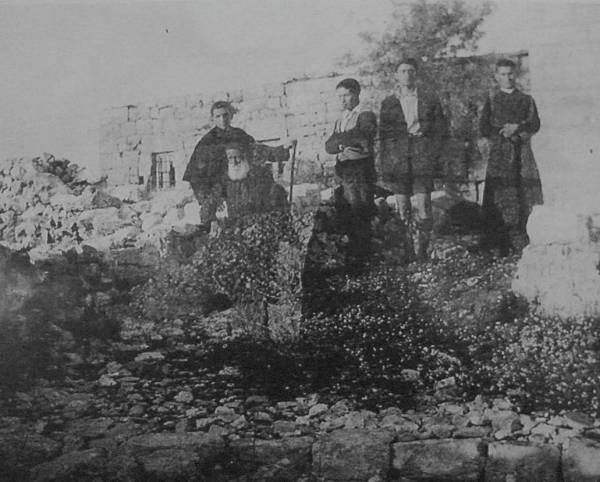 monastery in which St. Charbel had lived and upon development of the picture saw that St. Charbel miraculously appeared with the monks, according to information provided by St. Anthony’s Church.
monastery in which St. Charbel had lived and upon development of the picture saw that St. Charbel miraculously appeared with the monks, according to information provided by St. Anthony’s Church.
Art work for holy pictures of this saint is now taken from this photo. Can you see him? (Hint: smack dab in the middle) click on the picture and then zoom in….
St. Charbel is listed among The Incorruptibles, saints whose bodies were found intact years after burial. His body kept pouring oil and blood until the year before his canonization in 1977.
Here is a neat video entitled “The Saint Charble Song” …it’s special…
Tags: catholic, catholic podcast, catholic prayer, cathollc spirituality, Charbel Makhlouf, desert fathers, intercession, Lebanon, maronites, miracles, miraculous healings, Saint Maro, St. Charbel, st. sharbel
This entry was posted on Wednesday, July 24th, 2013 at 4:19 am
You can follow any responses to this entry through the RSS 2.0 feed.
Episode 24 Beginning to Pray Special: Â “Gazing on the Face of Christ with the Saints”

[powerpress]
Dr. Lilles’ continues his  Day of Recollection offered in April 2013.
Here is the continuation of the first presentation which focuses on the Mystical Saints who can help us to gaze on the Face of Christ:
Anthony will introduce the saints who will guide us through our reflections: Â St. Teresa of Avila, St. John of the Cross, St. Therese of Lisieux, Blessed Elisabeth of the Trinity and Blessed John Paul II. Â He also answers questions about methods of prayers, teaching others to pray, and how can one help restore the sense of the sacred to the mass and Eucharistic adoration.
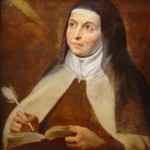
St. Teresa of Avila
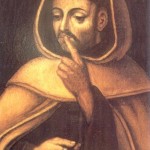
St. John o the Cross
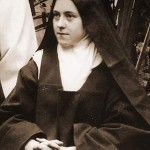
St. Therese of Lisieux

Blessed Elizabeth of the Trinity
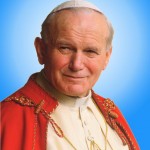
St. John Paul II
Dr.Anthony Lilles is a Catholic husband and father of three teaching Spiritual Theology at St. John Vianney Theological Seminary. He  teaches spiritual theology and spiritual direction to transitional deacons, and the spiritual classics to the men who enter the Spirituality Year, a year of prayer in preparation for seminary formation.  He is the author of the “Beginning to Pray”  catholic blog spot.
For other episodes in the series visit the Discerning Hearts page for Dr. Anthony Lilles
Tags: Anthony Lilles, catholic, catholic podcast, catholic prayer, cathollc spirituality, Discerning Hearts, father, prayer, spiritual direction, Spirituality Year
This entry was posted on Tuesday, June 25th, 2013 at 8:45 am
You can follow any responses to this entry through the RSS 2.0 feed.
Efficacious Novena to the Sacred Heart of Jesus Â
[powerpress]
I. O my Jesus, you have said: “Truly I say to you, ask and you will receive, seek and you will find, knock and it will be opened to you.” Behold I knock, I seek and ask for the grace of…… (here name your request)
Our Father….Hail Mary….Glory Be to the Father….Sacred Heart of Jesus, I place all my trust in you.
II. O my Jesus, you have said: “Truly I say to you, if you ask anything of the Father in my name, he will give it to you.” Behold, in your name, I ask the Father for the grace of…….(here name your request) Our Father…Hail Mary….Glory Be To the Father….Sacred Heart of Jesus, I place all my trust in you.
III. O my Jesus, you have said: “Truly I say to you, heaven and earth will pass away but my words will not pass away.” Encouraged by your infallible words I now ask for the grace of…..(here name your request) Our Father….Hail Mary….Glory Be to the Father…Sacred Heart of Jesus, I place all my trust in you.
O Sacred Heart of Jesus, for whom it is impossible not to have compassion on the afflicted, have pity on us miserable sinners and grant us the grace which we ask of you, through the Sorrowful and Immaculate Heart of Mary, your tender Mother and ours.
Say the Hail, Holy Queen and add: St. Joseph, foster father of Jesus, pray for us.
— St. Margaret Mary Alacoque
(This is the prayer offered daily by St. Padre Pio for his spiritual children’s intentions)
This prayer is offered in audio form by Msgr. John Esseff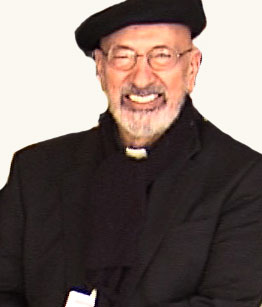
Tags: audio, catholic, catholic podcast, catholic prayer, cathollc spirituality, hail mary, Heart of Jesus, Jesus, mp3, Novena to the Sacred Heart of Jesus, O my Jesus
This entry was posted on Friday, May 31st, 2013 at 12:39 am
You can follow any responses to this entry through the RSS 2.0 feed.
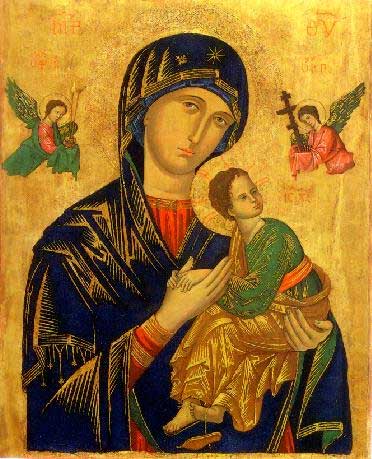 [powerpress]
[powerpress]
PRIEST:
Most holy and Immaculate Virgin and our Mother Mary,
you are our Perpetual Help, our refuge and our hope.
ALL:
We come to you today.
We thank God for all the graces received through your intercession.
Mother of Perpetual Help, we promise to live you always
and to do all we can to lead others to you.
PRIEST:
Mother of Perpetual Help, confident of your powerful influence with God, obtain for us these graces:
ALL:
The strength to overcome temptation,
a perfect love for Jesus Christ,
and a holy death
so that we will live with you and your Son for all eternity.
PRIEST:
Let us pray as a community of faith.
Mary, all generations have called you blessed,
and the Almighty has done great things for you.
ALL:
Mother of Perpetual Help,
we call upon your most powerful name.
Your very name inspires confidence and hope.
May it always be on our lips,
especially in time of temptation
and, at the hour of our death.
Blessed Lady, help us whenever we call on you.
Let us not be content with merely pronouncing your name.
May our daily lives proclaim
that you are our Mother and our Perpetual Help.
PRIEST:
Let us pray for our temporal wants:
ALL:
Mother of Perpetual Help,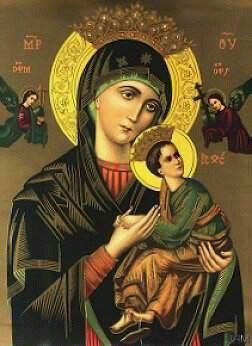
with the greatest confidence we kneel before you.
We implore your help in the problems of our daily lives.
Trials and sorrows often depress us;
misfortunes and privations being misery into our lives;
everywhere we meet the cross.
Comforter of the Afflicted
beg your Son, Jesus,
to strengthen us as we bear our burdens
and to free us from our sufferings.
Or if it be the will of God
that we should suffer still longer,
help us endure all with love and patience.
May we follow the example of your Son,
and through him,
with him,
and in him,
commend ourselves to the care of our heavenly Father.
PRIEST:
Let us now present our petitions and our thanks.
Lord Jesus Christ, at a word from Mary your Mother,
you changed water into wine at Cana of Galilee.
Listen now to the People of God gathered here
to honor Our Mother of Perpetual Help.
Grant our petitions and accept our sincere thanks.
PRIEST:
Grant wisdom and guidance to our Holy Father, Pope . . .,
our Bishop . . ., our priest,
and all the leaders of our nation, state, and community.
ALL:
Hear us, Lord, through Mary our Mother.
PRIEST:
Grant peace and unity throughout the world, especially in our homes and families.
ALL:
Hear us, Lord, through Mary our Mother.
PRIEST:
Grant that young people respond generously to the call of the Holy Spirit
in deepening their faith and choosing their vocation in life.
ALL:
Hear us, Lord, through Mary our Mother.
PRIEST:
Grant us continued health of mind and body, and help the sick,
especially . . ., to regain their health according to your holy will.
ALL:
Hear us, Lord, through Mary our Mother.
PRIEST:
Grant eternal rest to all our deceased,
especially . . ., and to the souls of all the faithful departed.
ALL:
Hear us, Lord, through Mary our Mother.
PRIEST:
Let us pause now to silently present our own petitions to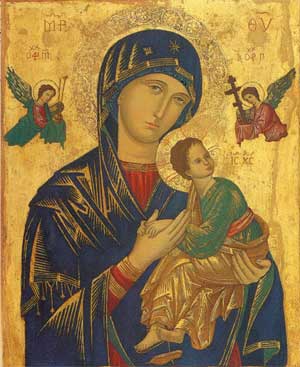
Our Mother of Perpetual Help.
PRIEST:
Lord, accept our thanks for the new life of grace you gave us.
ALL:
We thank you, Lord, through Mary our Mother.
PRIEST:
Accept our thanks for all the graces received
through the sacramental life of the Church.
ALL:
We thank you, Lord, through Mary our Mother.
PRIEST:
Accept our thanks for the spiritual and material blessings we have received.
ALL:
We thank you, Lord, through Mary our Mother.
PRIEST:
Let us pause now to silently thank
Our Mother of Perpetual Help for our own favors received.
PRIEST:
we pray for the sick:
ALL:
Lord, look upon your servants
laboring under bodily weakness.
Cherish and revive the souls
which you have created
so that, purified by their suffering
they may soon find themselves healed by your mercy.
We ask this through Christ our Lord. Amen.
PRIEST:
May the Lord Jesus Christ be with you that he may defend you,
within you that he may sustain you,
before you that he may lead you,
behind you that he may protect you,
above you that he may bless you
in the name of the Father, the Son, and the Holy Spirit.
ALL:
Amen.
PRIEST:
Let us renew our confidence in Mary as a perpetual help.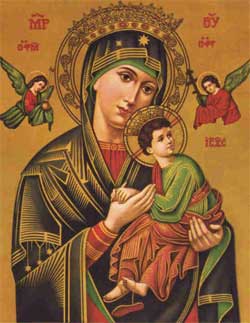
ALL:
Mother of Perpetual Help,
you have been blessed and favored by God.
You became not only the Mother of the Redeemer,
but the Mother of the redeemed as well.
We come to you today as your loving children.
Watch over us and take care of us.
As you held the child Jesus in your loving arms,
so take us in your arms.
Be a mother ready at every moment to help us.
For God who is might * has done great things for you,
and his mercy is from age to age
on those who love him.
Our greatest fear is
that in time of temptation,
we may fail to call out to you,
and become lost children.
Intercede for; us, dear Mother,
in obtaining pardon for our sins,
love for Jesus,
final perseverance,
and the grace always to call upon you,
Mother of Perpetual Help.
PRIEST:
Let us unite with the Christians of all ages in praising Mary
and in committing ourselves to her powerful protection:
ALL:
Hail Mary, etc.
PRIEST:
Pray for us, O holy Mother of God.
ALL
May we may become worthy of the promises of Christ.
PRIEST:
Let us pray. Lord Jesus Christ, who gave us your Mother Mary,
whose image we venerate, as a mother ready at every moment to help us;
grant, we beg you, that we who call on her help my always
enjoy the fruit of your redemption.
We ask this through you who live and reign forever.
ALL:
Amen.
vocals offered by Fr. Mark Cyza and Kris McGregor
Tags: catholic, catholic podcast, catholic prayer, cathollc spirituality, Mother of Perpetual Help
This entry was posted on Tuesday, May 14th, 2013 at 12:21 am
You can follow any responses to this entry through the RSS 2.0 feed.
Episode 12 “What am I to do?†The Discernment of God’s Will in Everyday Decisions w/Fr. Timothy 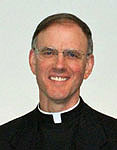 Gallagher.
Gallagher.
In this episode with Fr. Gallagher, Â the series concludes with an instruction on the Third Mode and summary overview of “Discerning the Will of God”.
For other episodes in the series visit The Discerning Hearts “Discerning the Will of God†page
Father Timothy M. Gallagher, O.M.V., was ordained in 1979 as a member of the Oblates of the Virgin Mary, a religious community dedicated to retreats and spiritual formation according to the Spiritual Exercises of St. Ignatius. Â Fr. Gallagher is featured on the EWTN series “Living the Discerning Life: Â The Spiritual Teachings of St. Ignatius of Loyola”.
For more information on how to obtain copies of Fr. Gallaghers’s various books and audio which are available for purchase, please visit  his  website:   frtimothygallagher.org
For the other episodes in this series check out Fr. Timothy Gallagher’s “Discerning Hearts†page
Tags: catholic, catholic podcast, catholic prayer, cathollc spirituality
This entry was posted on Thursday, February 21st, 2013 at 5:54 am
You can follow any responses to this entry through the RSS 2.0 feed.
Episode 11 “What am I to do?†The Discernment of God’s Will in Everyday Decisions w/Fr. Timothy  Gallagher.
Gallagher.
In this episode with Fr. Gallagher,  there is a brief summary of the First and Second Mode.  Then Fr. Gallagher breaks open the Third Mode, a Ponderousness of Reasons, also know as the 4 columns.
For other episodes in the series visit The Discerning Hearts “Discerning the Will of God†page
Father Timothy M. Gallagher, O.M.V., was ordained in 1979 as a member of the Oblates of the Virgin Mary, a religious community dedicated to retreats and spiritual formation according to the Spiritual Exercises of St. Ignatius. Â Fr. Gallagher is featured on the EWTN series “Living the Discerning Life: Â The Spiritual Teachings of St. Ignatius of Loyola”.
For more information on how to obtain copies of Fr. Gallaghers’s various books and audio which are available for purchase, please visit  his  website:   frtimothygallagher.org
For the other episodes in this series check out Fr. Timothy Gallagher’s “Discerning Hearts†page
Tags: catholic, catholic podcast, catholic prayer, cathollc spirituality, Father Timothy M. Gallagher, Gallagher, Timothy Gallagher
This entry was posted on Thursday, February 14th, 2013 at 3:13 pm
You can follow any responses to this entry through the RSS 2.0 feed.
[powerpress]
Msgr. Esseff continues his reflection on the readings found in the readings of the Church’s liturgy, with a particular 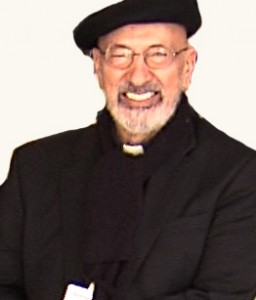 emphasis on the Thanksgiving during these turbulent times. We need to remember that He is not a “tinsel” God…He has power which He passes on to us to draw upon. The power comes from PRAYER! Do you believe that? Jesus invites us to enter through the open door…the open door into His Sacred Heart. Have you entered? Like in the parable given by Jesus in the Gospel, what have done with the “golden coins” you have been given?
emphasis on the Thanksgiving during these turbulent times. We need to remember that He is not a “tinsel” God…He has power which He passes on to us to draw upon. The power comes from PRAYER! Do you believe that? Jesus invites us to enter through the open door…the open door into His Sacred Heart. Have you entered? Like in the parable given by Jesus in the Gospel, what have done with the “golden coins” you have been given?
Tags: catholic, catholic podcast, catholic prayer, cathollc spirituality, Church, Jesus, John Esseff, sacred heart
This entry was posted on Saturday, November 24th, 2012 at 12:52 am
You can follow any responses to this entry through the RSS 2.0 feed.
On October 7, at the beginning of the Synod on the New Evangelization, 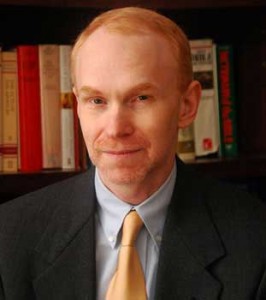 Pope Benedict XVI will declare St. Hildegard von Bingen and St. John of Avila  Doctors of the Church.  On this special edition of Inside the Pages I talk with Dr. Matthew Bunson about the significance of this declaration.  We talk about the lives and work of both saints and how their teachings can touch our lives today.
Pope Benedict XVI will declare St. Hildegard von Bingen and St. John of Avila  Doctors of the Church.  On this special edition of Inside the Pages I talk with Dr. Matthew Bunson about the significance of this declaration.  We talk about the lives and work of both saints and how their teachings can touch our lives today.
[powerpress]
Tags: catholic, catholic podcast, catholic prayer, cathollc spirituality, Church, matthew bunson, saints, work
This entry was posted on Sunday, October 14th, 2012 at 12:06 am
You can follow any responses to this entry through the RSS 2.0 feed.
A Doctor of the Church, a distinguished Jesuit theologian, writer, and cardinal, born at Montepulciano, October 4, 1542; died 17 September, 1621.
September, 1621.
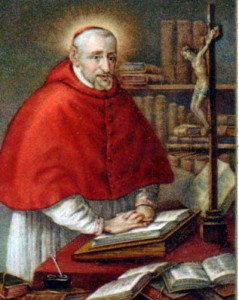 When you look up the word “prudence” in the dictionary, you may find his picture. Why? Does the name “Galileo” ring a bell. Many think they know the story…but do you? If you’ve never heard St. Robert Bellarmine’s role and thoughts on the matter, than you haven’t heard the whole story. Take a listen to Dr. Matthew Bunson break open the “Galileo issue” from a truly Catholic perspective.  Fascinating.
When you look up the word “prudence” in the dictionary, you may find his picture. Why? Does the name “Galileo” ring a bell. Many think they know the story…but do you? If you’ve never heard St. Robert Bellarmine’s role and thoughts on the matter, than you haven’t heard the whole story. Take a listen to Dr. Matthew Bunson break open the “Galileo issue” from a truly Catholic perspective.  Fascinating.
[powerpress]
For more on this great saints life check out the article found on New Advent
Tags: cardinal, catholic, catholic podcast, catholic prayer, cathollc spirituality, doctor of the church, galileo, jesuit, matthew bunson, prudence, st robert bellarmine, theologian
This entry was posted on Monday, September 17th, 2012 at 3:03 am
You can follow any responses to this entry through the RSS 2.0 feed.
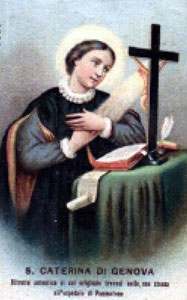 Jesus in your heart! Eternity in your mind! The will of God in all your actions! But above all, love, God’s love, entire love!
Jesus in your heart! Eternity in your mind! The will of God in all your actions! But above all, love, God’s love, entire love!
– St. Catherine of Genoa
St. Catherine of Genoa’s life is one that testified to the power that regular confessions and frequent Communion can have in helping us see the direction (or drift) of our life with God. Isn’t it interesting that people who have a realistic sense of their own sinfulness and of the greatness of God are often the ones who are most ready to meet the needs of their neighbors. Catherine’s life testifies to that as well.  She’s best known for her “Treatise on Purgatory” . She gave tirelessly to the needs of the poor and sick. Beautiful, married young to…well, should we be charitable and say…”an unpleasant fellow ” (Ok, he was a jerk) at 16.  During the course of ten years within the marriage, Catherine began to slowly slide into worldliness, not necessarily a sinful life, but not the one of holiness she had desired before her marriage. And then it happened, Catherine experienced a powerful encounter with the Holy Spirit in a dramatic life-changing mystical moment at the age of 26. Again you can read more about in “Treatise on Purgatory“. Her life of prayer and service to the poor and needy would effect her husband as well; his conversion is a strong testament to the fruits of her relationship with God. She reminds me a little of Mother Teresa, in that her deep, deep prayer led her to serve Him in those around her.
“Since I began to love, love has never forsaken me. It has ever grown to its own fullness within my innermost heart.” – St. Catherine of Genoa.  And it’s true…God is love, expand and make more room for Him and He will fill the space.
From Approved Apparitions:
“Catherine lived in holy obedience to God as He guided her to do His Will as He spoke to her interior,
“My daughter, observe these three rules, namely: never say I will or I will not. Never say mine, but always ours. Never excuse yourself, but always accuse yourself. When you repeat the `Our Father’ take always for your maxim, Fiat voluntas tua, that is, may his will be done in everything that may happen to you, whether good or ill; from the `Hail Mary’ take the word Jesus, and may it be implanted in your heart, and it will be a sweet guide and shield to you in all the necessities of life. And from the rest of Scripture take always for your support this word, Love, with which you will go on your way, direct, pure, light, watchful, quick, enlightened, without erring, yet without a guide or help from any creature; for love needs no support, being sufficient to do all things without fear; neither does love ever become weary, for even martyrdom is sweet to it. And, finally, this love will consume all the inclinations of the soul, and the desires of the body, for the things of this life.”
 Though Catherine lived a life of austere penance she did so for she understood how deadly is sin to the soul as a child of God can quickly turn to become a child of the Devil, if they choose to willfully disobey God through their actions. As Catherine explained, “If it were possible for me to suffer as much as all the martyrs have suffered, and even hell itself, for the love of God, and in order to make satisfaction to him, it would be after all only a sort of injury to God, in comparison with the love and goodness with which he has created, and redeemed, and, in a special manner, called me. For man, unassisted by God’s grace, is even worse than the devil, because the devil is a spirit without a body, while man, without the grace of God, is a devil incarnate. Man has a free will, which, according to the ordination of God, is in nowise bound, so that he can do all the evil that he wills; to the devil, this is impossible, since he can act only by the divine permission; and when man surrenders to him his evil will, the devil employs it, as the instrument of his temptation.”. (more…)
Tags: catholic, catholic podcast, catholic prayer, cathollc spirituality
This entry was posted on Saturday, September 15th, 2012 at 12:34 am
You can follow any responses to this entry through the RSS 2.0 feed.

